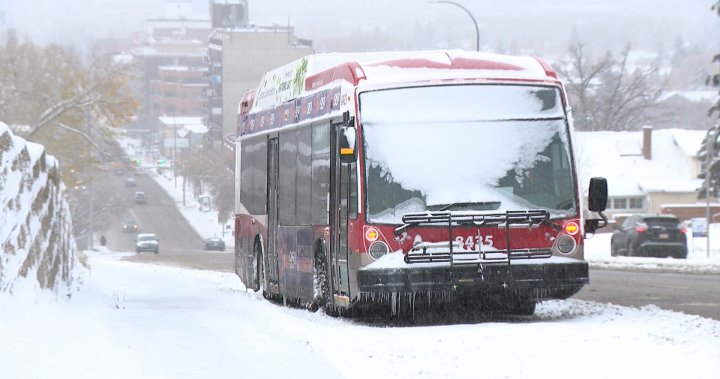Shortly after Canada Post’s top executives warned of “unsustainable” finances and the need for “significant changes” to survive, the federal government has little to say about what solutions are necessary.
Board chair André Hudon told the Crown corporation’s annual general meeting Wednesday that the national mail carrier is at a “critical juncture” as it struggles to compete against e-commerce platforms like Amazon and faces dropping demand.
The company has also noted that the ministry overseeing Canada Post has not approved a corporate plan since 2020, and has yet to sign off on a submitted plan that would take the organization into 2028.
But concerns about what a reimagined Canada Post could look like tend to centre around either the hundreds of millions it would cost taxpayers to cover its fiscal gaps in the form of more government funding, or the service cuts that could be needed to cut budget strain — and how to ensure all Canadians can keep receiving mail.
Asked about those concerns Thursday, a spokesperson for Public Services and Procurement Minister Jean-Yves Duclos’s office told Global News the government will “continue to work closely with Canada Post to secure its long-term future.”
“As announced in Budget 2024, the government is also considering how to leverage Canada Post’s portfolio of federal properties to build more housing for Canadians,” his office said in a statement. “We will ensure postal service is maintained as part of Canada Post’s mandate as a ‘service first’ organization focused on delivering the mail.”
The statement provided no details on how that will be achieved. And both opposition politicians and analysts warn time is running out.
Global News reached out to both the Conservatives and NDP asking for their views on what needs to be done to adapt the postal service. The Conservatives did not respond to a request for comment Thursday.
“What we need to see is a viable plan going forward,” NDP public services critic Taylor Bachrach said in an interview. “And that falls to the minister. It falls to the government to provide some direction so that we can have public postal service into the future.”
Bachrach, who represents the Skeena—Bulkley Valley riding in northern British Columbia, said his main concern is the loss of mail delivery in rural communities like the one he serves.
“They’re getting medication through the mail in small, remote communities that have few retail opportunities,” he said. “They’re doing a lot of their shopping and buying goods through the mail.

Get breaking National news
For news impacting Canada and around the world, sign up for breaking news alerts delivered directly to you when they happen.
“If we didn’t have Canada Post, you can bet that Amazon is not going to come in and serve those communities in the same way in an affordable way.”
The company has been posting “significant” annual losses since 2018. Last year’s loss was the second-largest on record at $748 million.
In May, Canada Post raised the cost of a stamp purchased in a booklet by seven cents to 99 cents. The price hike is expected to add $23.8 million to its gross revenue by April 2025, it said at the time.
Canada Post has called on the federal government to update legislation that mandates mail delivery deadlines to make them more flexible, raising concerns it could reduce daily mail deliveries.
President and CEO Doug Ettinger testified to the House government operations committee in May that the company needs to expand its operations and ensure deliveries seven days a week to compete with Amazon and other private parcel delivery companies that have taken chunks out of Canada Post’s business.
Ettinger told Wednesday’s general meeting that the company has seen its parcel delivery market share cut in half since 2019. Letter mail deliveries, once Canada Post’s top revenue source, has plummeted from 5.5 billion letters a year to about two billion over the past two decades, he said.
Bachrach said he supports initiatives suggested by the Canadian Union of Postal Workers on ways Canada Post can innovate and bring in additional revenue.
Those include expanding services at post offices to include postal banking and passport renewals, and developing its own e-commerce platform for small and medium-sized businesses that could compete with Amazon.
Those measures and others would require government support, however.
“Obviously there needs to be innovation,” Bachrach said. “The corporation needs to adapt to this new reality, and we need to see the government show some leadership to get us there.”
Marvin Ryder, an associate professor of marketing at McMaster University, said European countries have proved the government service model can be effective.
He told Global News any revenue-generating solution is preferable to alternatives like government funding boosts, which could involve raising taxes.
“To have a tax to keep the postal service going, I don’t think people are going to love that idea,” he said. “It could be done as a short-term measure, but that’s not a permanent solution.”
Other public postal services around the world have been struggling against the same headwinds of e-commerce and dwindling demand as Canada Post.
In 2020, the U.S. Postal Service pursued drastic cuts it later had to reverse to ensure mail-in ballots could be processed in time during that year’s election, where voting by mail was high in demand due to the pandemic.
In 2022, legislation was passed that forgave billions of dollars in debt and lifted requirements for the agency to finance workers’ health care benefits in advance. That provision had been blamed for pushing the service into 14 straight years of losses, and estimates it would lose another US$160 billion over the next decade.
Ryder said he hoped to hear ideas on how Canada Post might change course from those same executives warning of a financial cliff Wednesday, but was disappointed that none were provided.
However, he said he expects the future of the national mail carrier will be a major topic of concern for the rest of the year, particularly once Parliament returns in September.
“You can’t keep losing this money forever,” Ryder said. “By my calculations, Canada Post starts to run out of cash by June of 2025.
“I believe that over the next six months, there should be some big news coming from Canada Post, because something’s got to happen and it’s got to happen quick.”
— with files from The Canadian Press
© 2024 Global News, a division of Corus Entertainment Inc.



